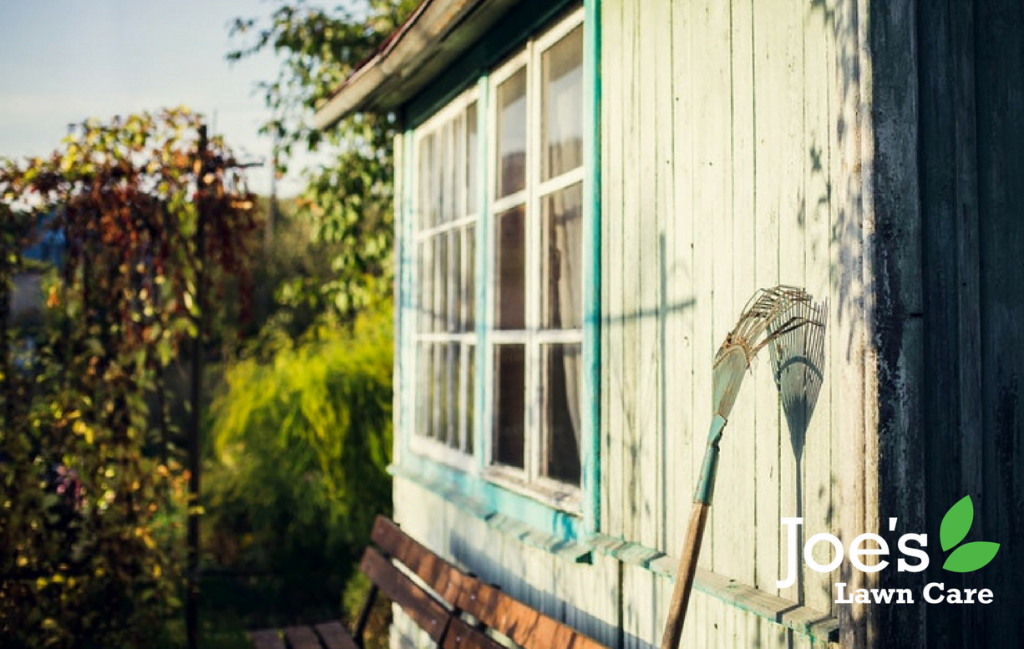Spring has arrived.
Actually, let’s rephrase that a little. Spring was meant to arrive. Alas it snowed and rained and rained and snowed. But just because spring hasn’t arrived yet doesn’t mean it isn’t coming. It is. It’s just running fashionably late which, in gardening speak, means it’s about two-three weeks behind schedule. No. it’s not ideal, but it does come with a lovely dollop of good news: you haven’t needed to start your spring lawn care routine yet.
The bad news is: you may have gotten too comfortable and become tempted by the idea of neglecting your spring lawn care chores entirely. Don’t let this happen. Seriously. You’ll only live to regret it.
“Come on.” We hear you huff. “That’s not true.”
“Yes it is.” We reply with gusto. “It’s super true. Gospel even.”
“Why?”
“Because if you neglect your spring lawn care chores you’ll end up locked in an uphill battle for the rest of the year and maybe – just maybe – the rest of your life.”
Okay, that last bit was a slight exaggeration. But not the bit about struggling for the rest of the year. That’s absolutely true. The more effort you put in now, the easier your lawn life will be come those glorious summer months. It’ll be less mowing the grass and more sipping cocktails from a glass.
So, without further ado, here are our top tips to help you prepare your lawn for the late arrival of spring. That means all you need to do is make a cuppa, read the below, pull your gardening gloves on and get to it. Schimples.

1.Rake It Or Break It
Raking. That should always be the first spring lawn chore on the list. The problem is, no one does this because they don’t think they need to. Instead, they roll their eyes and mutter something like, “but I raked all the leaves up in Autumn, like you told me to.” And good on ya. But it’s still a moot point because raking isn’t just about removing leaves: it’s for managing lawn thatch too #scarification.
To put it simply: a good session of spring raking will remove all the grass blades that died during the cold winter months and are now just waiting to become part of your thatch build-up.
But that’s not the only reason you need to put your back into it. Raking will also help you solve any snow mould problems you may have. Now, there is a good chance you don’t know what snow mould is. So, to sum it up, snow mould is basically a matted patch of grass where the blades are all stuck together. It’s not the easiest thing to penetrate, but showing your lawn some tough-love with a rake should do the trick.
As for the all-important question of “when?” we reckon you can go ahead and start raking now that the snow season has come to the end and the flowers are about to start blooming.

2. Compaction Reaction
From lots of foot traffic to poor soil composition, there is a big bag of reasons why your lawn is probably suffering from the dreaded lawn compaction. The trick is spotting the signs, and the most telling one of all is moss. Urgh. Moss. The good news is, you can get rid of this sucker relatively simply, but only if you accept moss is not just another weed. No, siree.
The solution is lawn aeration, which is basically where you stab holes all over your lawn to help the soil beneath it breathe. As for your options, you can do this with a pitchfork (long and tedious), walk up and down your garden in your golf shoes (somewhat inefficient) or give us a call (way better idea).
3. Over Feed It, Over Seed It
There’s nothing worse than seeing bare spots on your lawn come spring time. Okay. That’s not strictly true. There are plenty of things worse (like famine and drought and all that). But in lawn care speak, bare patches are pretty bad, especially those that riddle a lawn. They could be caused by lots of foot traffic, your puppy peeing or just general neglect. Whatever it is, grass seed is the answer – aka over seeding.
Sure, autumn is generally the best time for over seeding because there is less growth competition. That said, if you’re staring down the barrel of a dire situation, there’s no point hesitating. Just get on it.
4. Back Off, Broadleaf
Of all the weeds that do our nut in, it’s the Broadleaf weed that really knows how to press our buttons. That said, it’s pretty simple to treat, by which we mean: kick its butt. First things first, grab yourself a suitable herbicide or all-in-one treatment and douse the suckers in it (according to the instructions on the back). Of course, if you’d rather go all medieval on these weeds, you can pull them out by hand or even use a knife. So long as you get the root out, you can use whatever technique you like.
5. Top It All Off
There’s a good chance your lawn has become a tad uneven. It’s a time thing. It just happens. To combat this, we recommend you apply some top dressing to any low spots on your lawn. Of course, it’s not just about creating a pretty garden or giving into your mild-case of OCD. Top dressing has an abundance of health benefits too. We’re talking about a natural breakdown of any thatch, improving the drainage, firming up the surface – that sort of thing. You can even add a some nutrients to your dressing mix to improve your the fertility if your lawn if you fancy

6. Aim High, Mow High
Spring is coming and that means your grass is going to start growing and that means you’re going to need to start mowing. However, don’t just wheel your mower out of the shed, dust it off, start it up and push. Instead, make sure you set the cutter a bit higher, so that it only chops the top third off your blades… maximum. If you don’t do this – if you decide to cut it low and buy yourself an extra three days of not mowing it again – you’ll find your lawn becomes super-stressed. Spring is all about doing it a little and often. That’s the secret to a lovely-jubbly lawn.
Actually, while we’re talking about mowers and all that jazz, try tuning your mower so that it runs smoothly from the start of spring right through to the end of summer.
7. Weed Them Out
Ahhhh, dandelions, those cheerfully yellow spring weeds that just love to pop up at this time of year. Well, it’s time for them to go. It’s not that we don’t enjoy their lively presence, it’s more to do with the fact they are weeds. With that in mind, the first thing you’ll want to do is, snap off their flower stems before they produce any seeds. If you want a little more closure, however, then try digging them out, roots and all. You can then turn the greens into scrummy salad if you so wish.

8. Cut Them Some Slack
It can be easy to forget that your lawn is a plant, but it is and that means it needs lots of light to survive n’ thrive. Not just that, but lots of water and air and food too. To help with this, try chopping back all the plants and shrubs and foliage and trees that surround your lawn. That way you will reduce the amount of competition there is for light, water and food in general. It will also mean less of your lawn is left in the shade, which a super-duper good thing.
Thanks for reading 8 Tasks To Get Your Lawn Set Up For Spring blog. For more lawn care tips and tricks, follow us on Facebook and Instagram.





